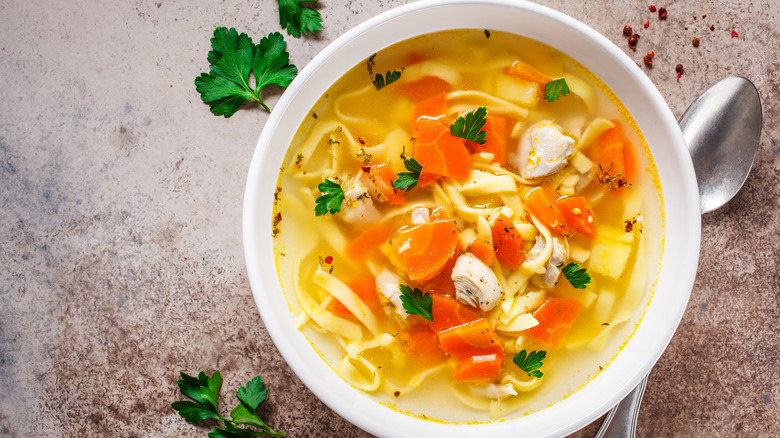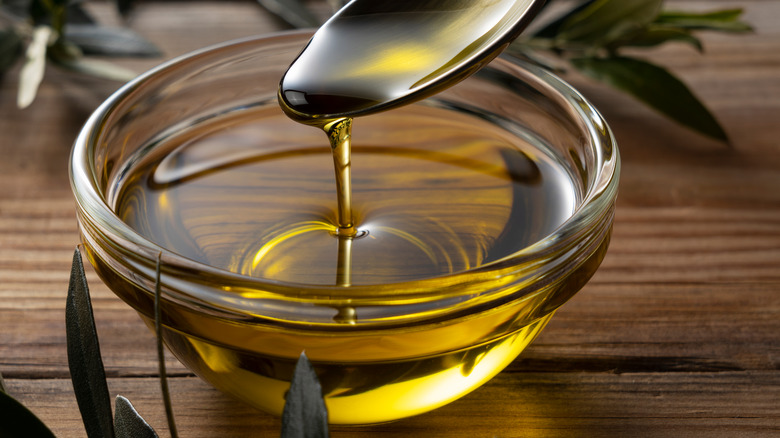The Reason You Should Sear Meat For Chicken Soup In Two Types Of Fat
Versatile, personal, with ingredients and cooking methods that vary region to region and culture to culture, homemade chicken soup is a special dish. Greek avgolemono is made with egg and lemon. Vietnamese chicken soups often use rice noodles and fresh ginger. Italian chicken soup typically includes small semolina noodles like ditalini (via Little Broken). Jewish versions feature matzo balls along with carrots and celery (via NBC 15). A Chinese text dating back to the second century B.C. touted chicken soup's medicinal properties, and from East Asia to Western Europe generations of people have believed in the dish's therapeutic benefits. So, it was perhaps not surprising when a clinical trial revealed chicken soup can relieve cases of nasal congestion (via PubMed).
Chef and Food Network star Kardea Brown encourages home cooks to harness the flavor-enhancing power of the Maillard reaction when making delicious and restorative chicken soup. The idea is to brown the ingredients, particularly the chicken, in fat before they simmer and fully cook in the broth. The purpose behind browning meats and vegetables is not just aesthetic, though most people would agree a browned steak, for example, is much more appetizing than a gray-hued steak that has been boiled. According to Serious Eats, protein and sugar molecules release complex and delicious flavors with the Maillard reaction when they begin to brown in a hot pan. And Brown has a helpful tip for bringing these flavors into chicken soup without burning the fat (via Kitchn).
Sear the meat in 2 types of fat
Kardea Brown, host of the Food Network's Delicious Miss Brown, has some flavor packed upgrades for the classic chicken noodle soup: Use two types of meat, dark chicken thighs and white chicken breasts, browned in two types of fat — butter and oil (via Kitchn). Butter helps to draw out the flavor of the meat, adding richness that melds perfectly with the browned deliciousness released by the Maillard reaction. However, it has a low smoke point, meaning browned butter can turn very quickly into burnt butter — black in appearance, bitter-tasting, and emanating smoke from the pan. The addition of olive oil prevents burning because it has a higher smoke point, which is why Brown recommends using this hack for browning chicken before it finishes simmering in the broth to make chicken noodle soup.
Can you burn olive oil, though? According to the Washington Post, olive oil, like all varieties of oil, can burn when cooked at temperatures above its smoke point, which can range from 280 to 400 degrees. However, while burnt olive oil is likely to ruin the taste of food cooked on a skillet, there is less risk of having to throw out your dinner when roasting food in olive oil with an oven. The oil is unlikely to reach the oven's temperature, and heat is distributed more evenly to everything inside rather than being directly applied to the oil as it would be if cooking on a stove.

